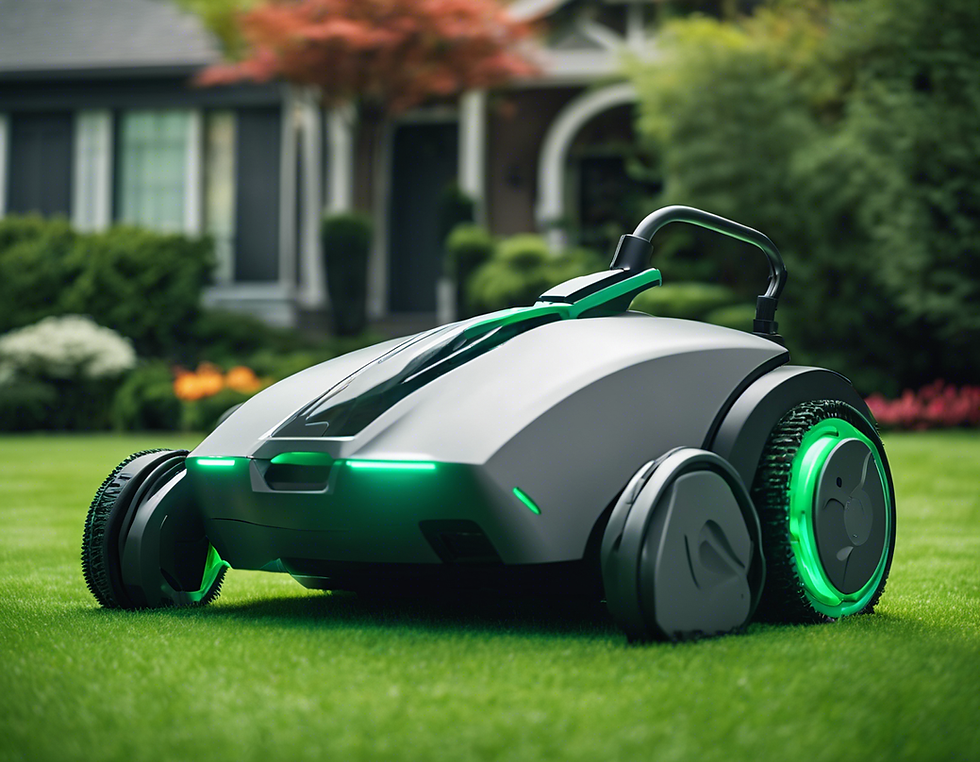Sustainable Practices for Lawn Maintenance
- Kevin W
- Sep 23
- 4 min read
Maintaining a beautiful lawn is a goal for many homeowners, but it often comes with environmental costs. Traditional lawn care methods can lead to excessive water use, chemical runoff, and harm to local ecosystems. Fortunately, sustainable lawn care practices offer a way to keep your lawn healthy and green while protecting the environment. This guide will explore practical, eco-friendly strategies to help you maintain your lawn responsibly.
Embracing Sustainable Lawn Care Techniques
Sustainable lawn care focuses on reducing environmental impact while promoting a healthy, resilient lawn. It involves practices that conserve water, improve soil health, and minimize chemical use. Here are some key techniques to consider:
Choose native or drought-resistant grass species: These grasses require less water and fertilizer, making them ideal for sustainable lawns.
Mow at the right height: Keeping grass longer helps shade the soil, reducing evaporation and weed growth.
Use organic fertilizers: These release nutrients slowly and improve soil structure without harmful chemicals.
Implement integrated pest management (IPM): Use natural predators and targeted treatments to control pests instead of broad-spectrum pesticides.
Water efficiently: Water deeply but infrequently, preferably early in the morning to reduce evaporation.
By adopting these methods, you can create a lawn that thrives naturally and supports local biodiversity.

Water Conservation Strategies for Sustainable Lawn Care
Water is a precious resource, and lawns can consume a significant amount if not managed properly. Sustainable lawn care includes smart watering practices that conserve water without sacrificing lawn health.
Install a rain sensor or smart irrigation system: These devices adjust watering schedules based on weather conditions, preventing overwatering.
Collect rainwater: Use rain barrels to capture runoff and use it for irrigation.
Water deeply and less often: Deep watering encourages roots to grow deeper, making the lawn more drought-resistant.
Avoid watering during the heat of the day: Early morning watering reduces evaporation losses.
Aerate your lawn: Aeration improves water penetration and reduces runoff.
These water-saving techniques not only reduce your water bill but also help maintain a sustainable lawn ecosystem.

What is the 1/3 Rule for Lawns?
The 1/3 rule is a simple guideline for mowing that helps maintain lawn health and sustainability. It states that you should never cut more than one-third of the grass blade length at a time. This practice has several benefits:
Reduces stress on grass: Cutting too much at once can shock the grass, making it vulnerable to disease and pests.
Promotes deeper root growth: Longer grass blades shade the soil and encourage roots to grow deeper.
Improves moisture retention: Taller grass shades the soil, reducing evaporation and keeping the lawn hydrated.
Limits weed growth: Healthy, longer grass crowds out weeds naturally.
To apply the 1/3 rule, adjust your mower height so that you only trim a small portion of the grass each time you mow. This simple step supports a healthier, more sustainable lawn.

Soil Health: The Foundation of Sustainable Lawn Care
Healthy soil is the cornerstone of a sustainable lawn. It supports strong grass growth, improves water retention, and reduces the need for chemical inputs. Here are some ways to improve and maintain soil health:
Test your soil: Understanding soil pH and nutrient levels helps you apply the right amendments.
Add organic matter: Compost and mulch enrich the soil with nutrients and beneficial microbes.
Avoid compaction: Aerate your lawn regularly to allow air, water, and nutrients to reach roots.
Use natural soil conditioners: Products like biochar or mycorrhizal fungi can enhance soil structure and fertility.
Minimize chemical use: Excessive fertilizers and pesticides can harm soil life and degrade soil quality.
By focusing on soil health, you create a strong foundation for a vibrant, sustainable lawn.
Incorporating Eco-Friendly Lawn Maintenance Practices
One of the best ways to ensure your lawn care is sustainable is to adopt **eco-friendly lawn maintenance** practices. These include:
Using electric or manual lawn equipment: Reduces emissions and noise pollution.
Recycling grass clippings: Leave clippings on the lawn to decompose and return nutrients to the soil.
Planting pollinator-friendly flowers: Supports local wildlife and enhances biodiversity.
Reducing lawn size: Replace some lawn areas with native plants, shrubs, or ground covers that require less maintenance.
Avoiding synthetic chemicals: Opt for natural pest control and fertilization methods.
These steps help reduce your environmental footprint while maintaining a beautiful lawn.
Enhancing Biodiversity in Your Lawn
A sustainable lawn is not just about grass - it’s about creating a mini-ecosystem that supports various forms of life. Enhancing biodiversity can improve lawn resilience and reduce maintenance needs.
Incorporate wildflower patches: These provide habitat and food for pollinators.
Create habitat features: Small logs, rocks, or birdhouses encourage beneficial insects and wildlife.
Use diverse plant species: Mix grasses with clover or other ground covers to improve soil nitrogen and reduce weeds.
Avoid monocultures: Diverse lawns are less prone to pests and diseases.
By fostering biodiversity, your lawn becomes a vibrant, sustainable space that benefits both you and the environment.
Sustainable lawn care is achievable with thoughtful practices that prioritize environmental health. By conserving water, improving soil, following the 1/3 mowing rule, and embracing eco-friendly lawn maintenance, you can enjoy a lush, green lawn that supports local ecosystems. Start implementing these strategies today to create a lawn that is both beautiful and sustainable for years to come.













Comments